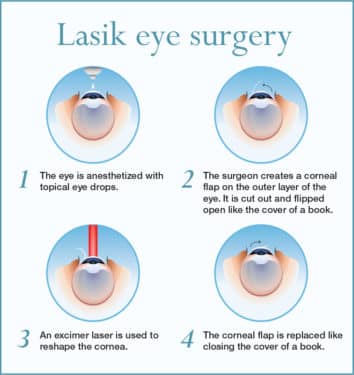A Thorough Evaluation Of Modern Cataract Surgical Procedure Techniques
A Thorough Evaluation Of Modern Cataract Surgical Procedure Techniques
Blog Article
Personnel Writer-Hogan Thestrup
As you explore the evolution of advanced cataract surgery methods, you'll witness a trip marked by ingenuity and accuracy. From old techniques that paved the way for modern innovations to cutting-edge innovations that are changing the area, the detailed introduction of cataract surgical procedure methods is a testament to human progression and devotion to boosting patient results. The complex interaction between historical strategies and advanced improvements produces a fascinating narrative that clarifies the advancement of among one of the most typical surgical procedures worldwide.
Historical Techniques and Technologies
Check out how very early doctors reinvented cataract therapy by employing cutting-edge strategies and devices. In the past, cataract surgical treatment was a high-risk and agonizing treatment. However, ancient Indian medical professionals were among the initial to try medical treatments for cataracts, using a technique called 'formulating' where a sharp tool was used to press the cataract back into the eye. This method, though crude by today's criteria, laid the groundwork for future improvements in cataract surgery.
As time advanced, Arab physicians made significant contributions by creating specialized needles for cataract removal. https://laser-eye-surgery-doctor62728.newbigblog.com/35218719/the-ultimate-overview-to-deciding-on-eye-decline-for-dry-eyes-contrasting-popular-brands were used to puncture the cataract and afterwards extract it from the eye, noting a considerable enhancement in medical precision.
Later, in the 18th century, the French surgeon Jacques Daviel pioneered the strategy of extracapsular cataract removal, where the entire lens was eliminated intact through a bigger incision. This noted a significant innovation in cataract surgery techniques, leading the way for the modern-day procedures we utilize today.
Modern Surgical Approaches
Early techniques in cataract surgical procedure have evolved substantially, causing the development of contemporary medical strategies that prioritize precision and enhanced person results. Modern cataract surgery currently often involves a procedure called phacoemulsification, where an ultrasonic tool separate the cataract for removal with a tiny laceration. Recommended Web-site enables quicker recovery and lowers the threat of complications compared to older approaches.
Additionally, the use of sophisticated intraocular lenses (IOLs) has actually transformed cataract surgery results. These lenses can correct not only the cataract however additionally other refractive errors like astigmatism, lowering the need for glasses post-surgery.
Surgeons today likewise have accessibility to innovative imaging technologies that aid in exact preoperative preparation and intraoperative decision-making. Optical comprehensibility tomography (OCT) and other imaging techniques give thorough images of the eye's structures, permitting a much more tailored approach to each individual's surgical procedure. With these advancements, modern-day cataract surgical procedure methods continue to boost, offering clients safer treatments and far better aesthetic results.
Arising Technologies in Cataract Surgical Procedure
With improvements in innovation revolutionizing the area, cataract surgical treatment is experiencing the combination of ingenious methods for enhanced client outcomes. Arising innovations in cataract surgical treatment are reshaping the landscape of ocular procedures. One such development is femtosecond laser innovation, which allows for exact corneal cuts, capsulotomies, and lens fragmentation, resulting in improved medical precision and results.
In addition, intraoperative aberrometry is acquiring appeal, making it possible for real-time measurements of refractive mistakes throughout surgery to improve intraocular lens power calculations and minimize postoperative refractive shocks.
In addition, the use of innovative imaging modern technologies like optical coherence tomography (OCT) and intraoperative wavefront aberrometry help surgeons in specific medical planning and implementation. These tools give in-depth physiological information and aid customize medical methods for each and every client's distinct eye characteristics.
In addition, advancements in artificial intelligence are being discovered to help in preoperative preparation, intraoperative decision-making, and postoperative care, potentially optimizing surgical outcomes and person complete satisfaction. Accepting these emerging modern technologies in cataract surgical procedure holds promise for additional improving person end results and making sure the proceeded advancement of ocular medical methods.
Conclusion
As you trip through the background of cataract surgery, you witness the improvement from ancient practices to innovative technologies. Like a phoenix climbing from the ashes, cataract surgical treatment has actually advanced into a beacon of hope and technology.
Just as a caterpillar emerges from its cocoon as an attractive butterfly, cataract surgical treatment has progressed right into a refined art form, offering individuals more clear vision and a brighter future.
The evolution continues, beaming a light on countless opportunities.
